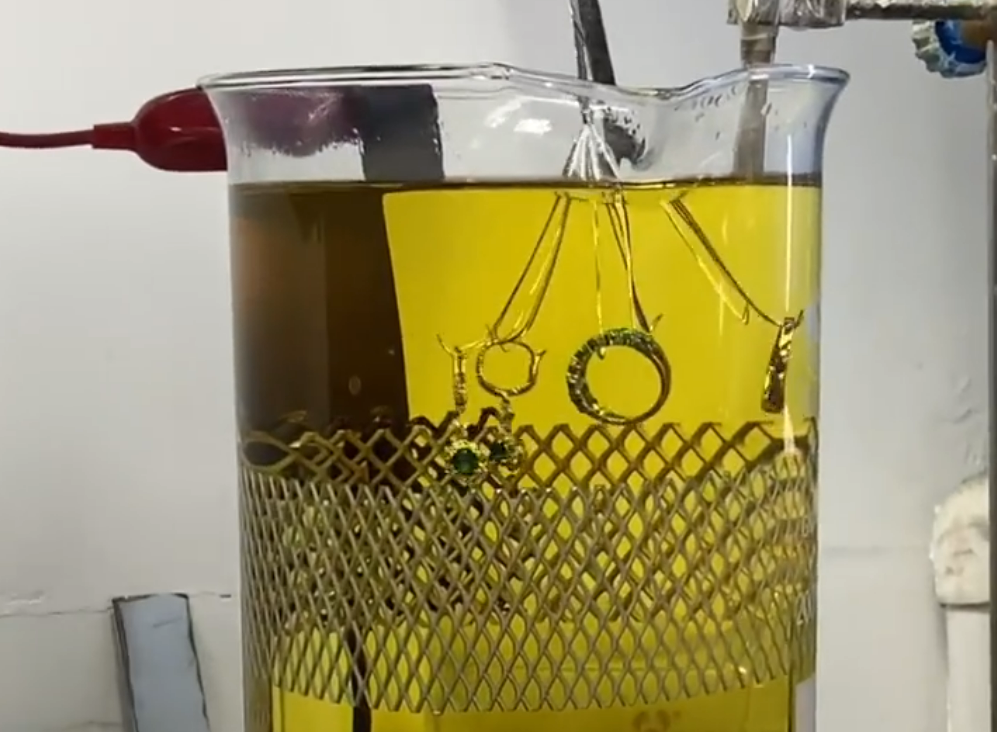Gold-plated jewelry is a popular choice for its elegant appearance and affordability. However, over time, the gold layer on this type of jewelry may start to fade or tarnish. If you want to maintain the beautiful luster of your gold-plated jewelry, follow these tips to prevent fading and keep it looking stunning for longer.
WHAT IS GOLD PLATED JEWELRY?

Gold plated jewelry is a type of jewelry that has a thin layer of gold coating on the surface of another material, such as silver or copper. This layer of gold is shorter than solid gold jewelry, which means that gold plated jewelry may wear off over time. It is essential to care for and maintain your gold-plated jewelry. Frequent exposure to water, abrasives, or chemicals may cause it to tarnish or lose its finish. When properly cared for, gold-plated jewelry can last a long time. It offers a more affordable option for those who want the look of gold without the higher cost of solid gold jewelry.
Gold plated jewellery has gained popularity over the years due to its affordability and unique designs. Unlike solid gold jewellery, gold-plated pieces have a thin layer of gold.Therefore, it makes them more accessible to a broader range of individuals. Additionally, gold-plated jewellery often features intricate and eye-catching designs unique to the individual piece. It is because jewellers can shape and engrave the base metal in many ways. As a result, it often results in a stunning end product. Overall, the affordability and distinctiveness of gold-plated jewellery make it a beloved choice among consumers looking for stylish and affordable jewellery options.
How is Gold Plated Jewelry Made?

Gold-plating is made through a process called electroplating.Electroplating features a base metal (commonly silver, brass, and nickel, sometimes copper). A thin layer of real gold is applied over the base metal, resulting in a rich shine mimicking solid gold.
Gold plating is a painstaking process with different steps. (detail steps).These steps are condensed here:
- Base Metal Preparation & Cleaning: Cleaning the base metal removes contaminants, such as bacteria, oils, and debris covering the metal.
- Electroplating Bath: The thoroughly cleaned base metal is immersed in an electroplating bath containing a solution of water and chemicals. These chemicals include gold ions in the form of gold chloride or gold cyanide which will be used to plate over the base metal.
- Electroplating Process: An electrical current is applied to the bath with the base metal. This causes the gold ions to migrate from the anode to the cathode (the base metal), successfully bonding to the metal surface. The thickness of the gold is controlled through this process.
- Gold metal plating is measured with microns. The thicker the plating the more expensive the piece and the longer the plating will last.
- Rinsing and Drying: The piece is removed from the electroplating bath and rinsed thoroughly.
- Quality Control: The finished gold-plated jewelry is inspected for quality and adherence to design specifications. Any imperfections are fixed.
DOES GOLD PLATED JEWELRY TARNISH?

Yes, gold plated jewelry can tarnish. Tarnishing happens when the gold outer surface wears off or reacts with substances like sweat, oils, or chemicals. Over time, the gold plating may become dull or discolored. The likelihood of tarnishing depends on factors such as the thickness of the plating, the quality of the base metal, and how well the jewelry is cared for.
WHAT IS THE DURATION OF GOLD PLATING?
The durability of gold plating depends on the thickness of the gold layer. Thicker plating lasts longer and resists tarnishing better than thinner plating. The quality of the base metal also affects the longevity of gold plated jewelry. Higher-quality base metals, like brass or stainless steel, provide a better foundation for the gold plating and can help extend its lifespan.
CAN GOLD PLATING BE RESTORED IF IT BECOMES TARNISHED?

It is possible to restore tarnished gold plating to some extent, depending on the severity of the tarnish and the quality of the gold plating. If the tarnish is minimal, one can attempt to clean the jewelry using a gentle gold polish or a mixture of mild soap and water.
To clean gold-plated jewelry, gently scrub it with a soft cloth or brush, rinse with clean water, and pat dry. If the tarnish persists, a professional jeweler can replate the gold layer by removing the old tarnished layer and applying a new layer of gold plating. This will restore the jewelry's shine. Taking good care and preventing tarnishing is important for cost-effective gold-plated jewelry.
Tips:
Invest in a Gentle Cloth
If you use it often, you must clean your gold-plated jewelry at least once a year and more frequently, every three to six months. To keep them shining, use a cotton chamois or soft, non-abrasive, clean cloth when storing.
Minimize Contact with Water
Gold plating thickness, measured in microns, directly affects tarnishing. Higher microns mean less tarnishing. To protect your jewelry, remove gold-plated items before showering or swimming. Substances like chlorine in tap water can harm precious metals, leading to dullness or erosion.
Exercise Caution with Perfume
Be cautious with perfume around gold-plated jewelry. Avoid spraying perfume directly on gold items, as some chemicals can cause oxidation and lead your jewelry to tarnish. This chemical response can ultimately blacken your gold-plated items, although it is reversible with the appropriate measures
Strategic Jewelry Storage
Storing necklaces and earrings well is as essential as cleaning gold-plated jewelry. Use pouches, cases, or jewelry boxes to protect them from tarnishing and fading. For ultimate jewelry care, consider storing them in a dark, calm, and dry environment, free from humidity and excessive heat, which can accelerate tarnishing.
Conclusion
Extend the life of your favorite gold-plated jewelry by taking good care of it. Recognizing tarnishing is an attribute of gold-plated jewelry but it can be diminished and reversed by following a few simple pointers outlined in this article.

